Lo Fi, or low fidelity music, is a popular genre characterized by a warm, nostalgic, and comfy atmosphere. While not becoming mainstream until the late 2010’s, the origins of Lo Fi can be traced back to the 1980’s DIY hip hop scene.
Main elements of the genre include looped downtempo beats, jazzy lo-fi chord progressions, and distorted and degraded audio quality, including elements like vinyl crackles, tape hiss, and other audio artifacts.
Today, the rise in accessibility to music making technology has inspired many young artists to create their own lo-fi music with modern tools such as a laptop, DAW, and midi keyboard.
In this article we will include information on common elements found in lo-fi music, particularly creating your own lo-fi chord progressions, so you can get to producing chill vibe music in no time.
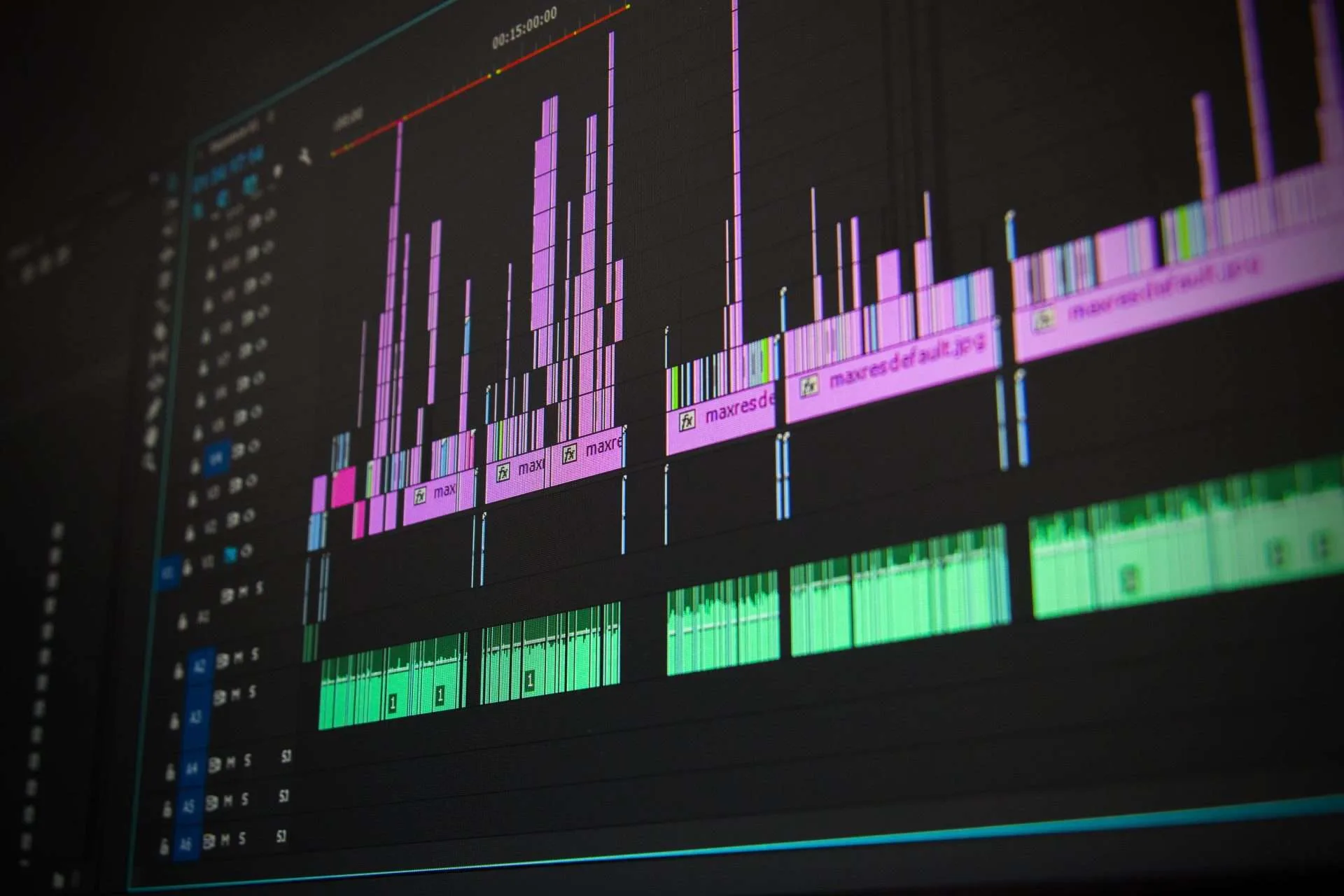
Origins of Lo Fi Music
In the 1980’s and 90’s, many DIY hip hop artists used analog devices like turntables and tape recorders to sample and loop breakbeats to rap over. This created a low grade audio quality that later became a desired creative element to the genre.
To this day, vinyl crackle, flutter & wow, and pitch modulation are distinctive to lo fi music, even in a time when hi fi music is easily accessible. Artists that are credited with pioneering the lo fi genre include J Dilla and MF Doom.
In the 2000’s Lo Fi hip hop was revived through the soundtracks of popular anime like Samurai Champloo, Cowboy Bebop, and the Boondocks.
This is where the anime aesthetic commonly associated with the genre likely occurred. Artists like Nujabes, Shing02, and Force of Nature were artists who took part in this 2nd generation of Lo Fi music.
In 2017, the Lofi Girl youtube channel began streaming artist-curated lofi music with the intention of being background music to study to.
The stream featured the animation of a young girl studying late into the night, her focus unwavering. As of 2023, the channel has reached over 13 million subscribers, with nearly 2 billion viewers on the stream.
The Lofi girl soon became an icon as a source of inspiration for young students with loads of coursework, and a motivational study companion for those who felt lonely.
The videos created the perfect environment for productivity, long term focus, and a temporary escape from the chaos and distractions of pandemic-era remote learning and the internet age.
This new wave of Lo-Fi music was often purely instrumental, ambient, and introspective. The genre’s simplicity, nostalgic appeal, and soothing qualities have made it a favorite among listeners and artists alike.
Related: Japanese Chord Progressions
Lo Fi Aesthetic
In order to get your LoFi track the right vibe, you should incorporate a relaxing looped visual. Common visuals used are anime gifs, such as a car driving in the city, characters performing mundane tasks or in deep contemplation.
Plants, cats, coffee, and late night study sessions are common tropes found in Lo-fi videos. Overall, the purpose is to enact a calm atmosphere that feels nostalgic, warm, and comfy.
In terms of musicality, drum loops, short jazz chord progressions, audio samples, and some vinyl cracking are the ingredients necessary for creating the perfect Lo Fi track.
Audio samples can include a short message that shares a certain opinion or lesson to take from the song.
Some of the best lofi songs have been created by DIY producers in their homes, so bonus points if the music is being created in your bedroom with the tools currently available to you.
Related: R&B Chord Progressions
Understanding Lo-fi Chords
Lofi guitar chords are essential in creating the genre’s signature sound, which is both soothing and complex. These chords typically include extended jazz chords such as major 7ths, minor 9ths, and dominant 11ths, which provide a rich, textured sound that contributes to the relaxed atmosphere of lo-fi music.
The use of these lofi chords, often played in a laid-back, swung rhythm, adds to the warm, nostalgic vibe that is characteristic of the genre. The dissonant notes within these extended chords are embraced, adding a sense of depth and emotion to the music.
| Chord Type | Chord Symbol | Example Usage | Reason for Use |
|---|---|---|---|
| Major 7th | Maj7 | CMaj7 | Adds a smooth, jazzy warmth to the progression |
| Minor 9th | m9 | Amin9 | Provides a dreamy, complex sound |
| Dominant 11th | 11 | G7#5 | Introduces a sense of depth and emotion |
| Minor 11th | m11 | Amin11 | Offers a rich texture and nostalgic vibe |
| Major 9th | Maj9 | FMaj9 | Creates a lush, serene atmosphere |
This harmonic complexity is a hallmark of lo-fi and is one reason why the genre can evoke such a strong mood with relatively simple instrumentation and production techniques.
For example, a common lofi chord progression might include chords like Cmaj9, G7#5, Amin11, and Fmaj9, which blend traditional harmony with jazzy dissonance to create a unique and easily recognizable sound.
Lo Fi Chord Progressions
Chord progressions play a significant role in creating the overall mood and atmosphere of lo-fi tracks. Lo-fi chord progressions are highly inspired by jazz harmonies.
So while most of the lo-fi chord progressions will be 2 to 4 chords in total, these chords will be extended chords that may contain some dissonance. Often these short progressions serve as the backbone for the entirety of the track. Keeping it simple is the key!
Progression 1
Cmin 11 – F7 – Ab Maj 7 – Eb Maj 7
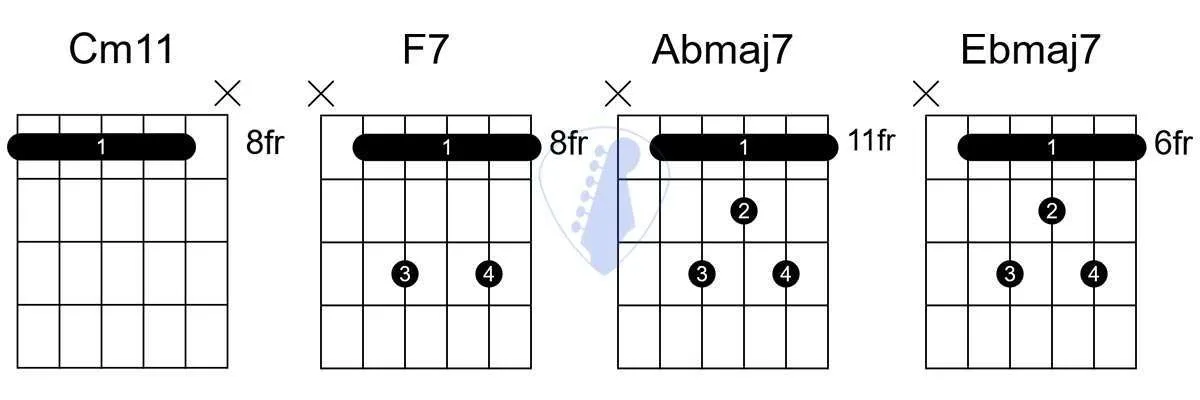
Progression 2
A Maj 7 – F#m7 – Bm7 – E7
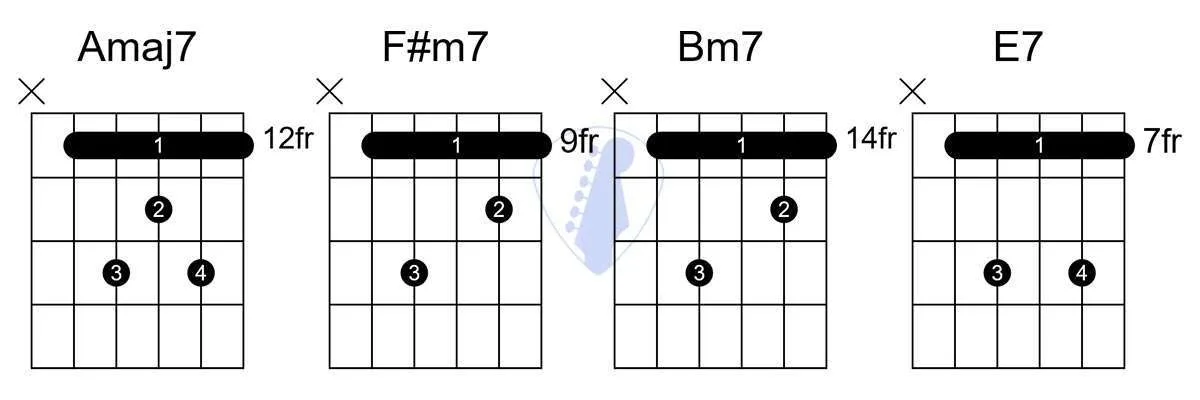
Progression 3
Dm9 – Em7 – Fmaj7 – Em7
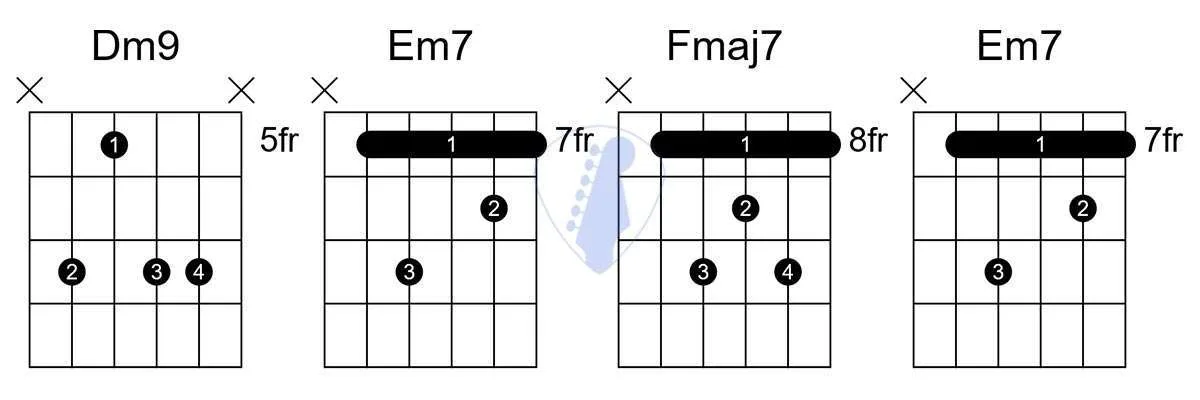
Progression 4
FMaj7 – CMaj9 – C#dim7 – Edim7
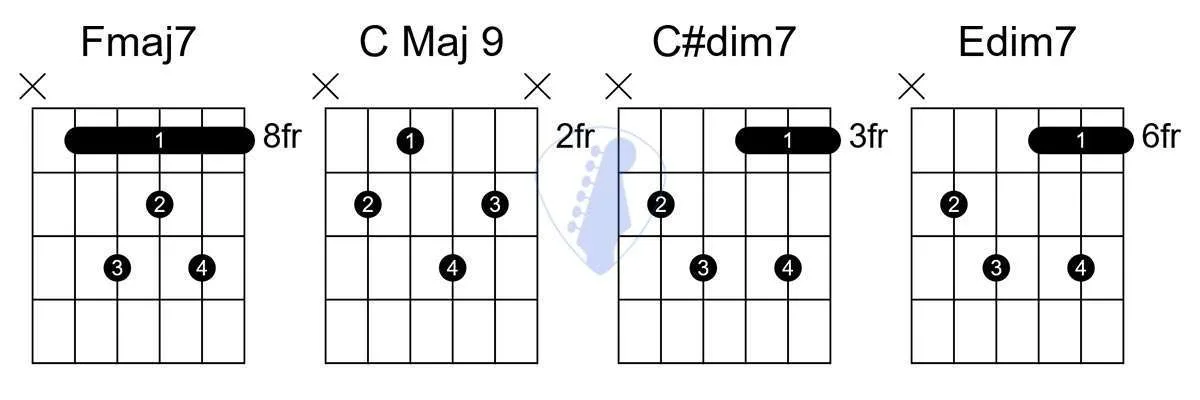
Progression 5
Cm11 – Fmin9 – Cm11 – G7#5
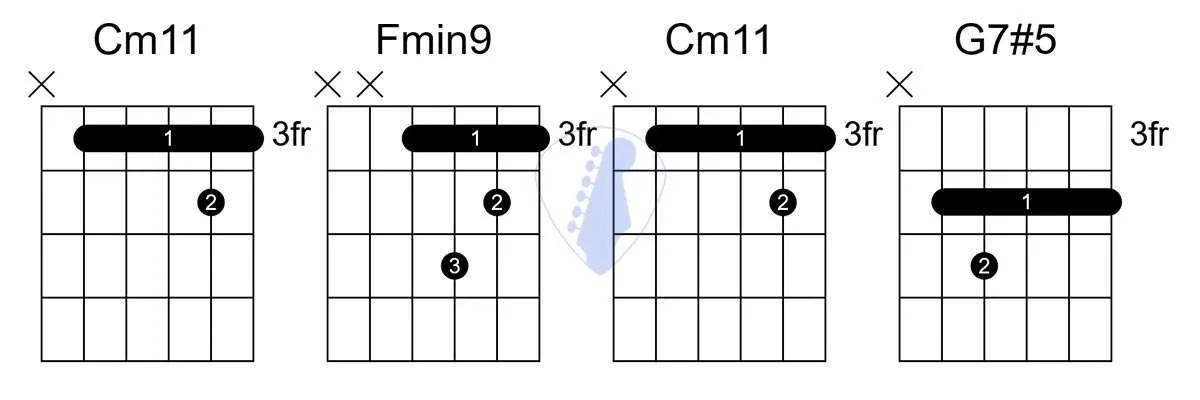
Frequently Asked Questions
What is a lofi chord?
Lofi music typically employs extended, or jazz, chords into each track. These progressions are often 2-4 chords in total with little to no variation.
What key is lofi in?
Lo Fi can be in any key. You can make great low fi tracks using just the white keys, in C major or A minor. Just remember to use plenty of 7th chords!
What does lofi music do for the brain?
While there is no scientific evidence that Lo-fi music has cognitive benefits, Lo Fi music does induce a focused, trance-like state perfect for blocking out distractions and getting hard concentrated work done.
What tempo is lofi?
A low tempo is ideal for lo fi music. Anywhere between 60-90 BPM is optimal.
Why is lofi called lofi?
Lo-fi is short for low fidelity. Low fidelity means low quality of sound, typically with a high ratio of noise to music. While this may seem like a bad thing, these qualities are often synonymous with the rawness, authenticity, and resourcefulness characteristic of home recording.
Low fidelity is the opposite of high fidelity: The high quality reproduction of sound.
Does lofi count as music?
Lo-fi definitely counts as music. However, one’s intention for listening to Lo-fi might be different than other genres. Lo-fi is mostly a vibe. Centered around creating a serene and comfortable atmosphere fit for intense focus.
People mostly listen to lo fi when they need to focus on other things, and don’t want to be distracted by outside noise. As a minimalistic genre, lofi does not include common elements of most music like vocals and dynamics. The absence of these attention grabbing elements makes it optimal for contemplation and focus.
This is unlike most other musical genres with a distinct message, cultural, and emotional significance that demands our full attention.
Related: Synthwave Chord Progressions
Why is lofi girl popular?
Lofi girl is a modern egregore. She is not real, but she is an idol to many students and those who work from home. She has become the face of the modern lo fi genre and what it signifies.
Related: Jazz Chords
Conclusion
In conclusion, the captivating realm of lo-fi music, rooted in DIY hip-hop of the 1980s, has blossomed into a serene and nostalgic genre adored by many. Its warm and comfy atmosphere, often accompanied by looped visual aesthetics, provides an escape into a tranquil world.
The heart of lo-fi lies within its harmonious chord progressions, often jazz-inspired and extended, encapsulating its distinct and dreamy sound.
Whether tracing its origins from the analog past or its resurgence through anime soundtracks and the Lofi Girl phenomenon, the genre has become a haven for focus, introspection, and productivity.
As technology empowers a new generation of creators, the simplicity and charm of lo-fi continue to captivate listeners, offering a harmonious sanctuary in an ever-connected world.
